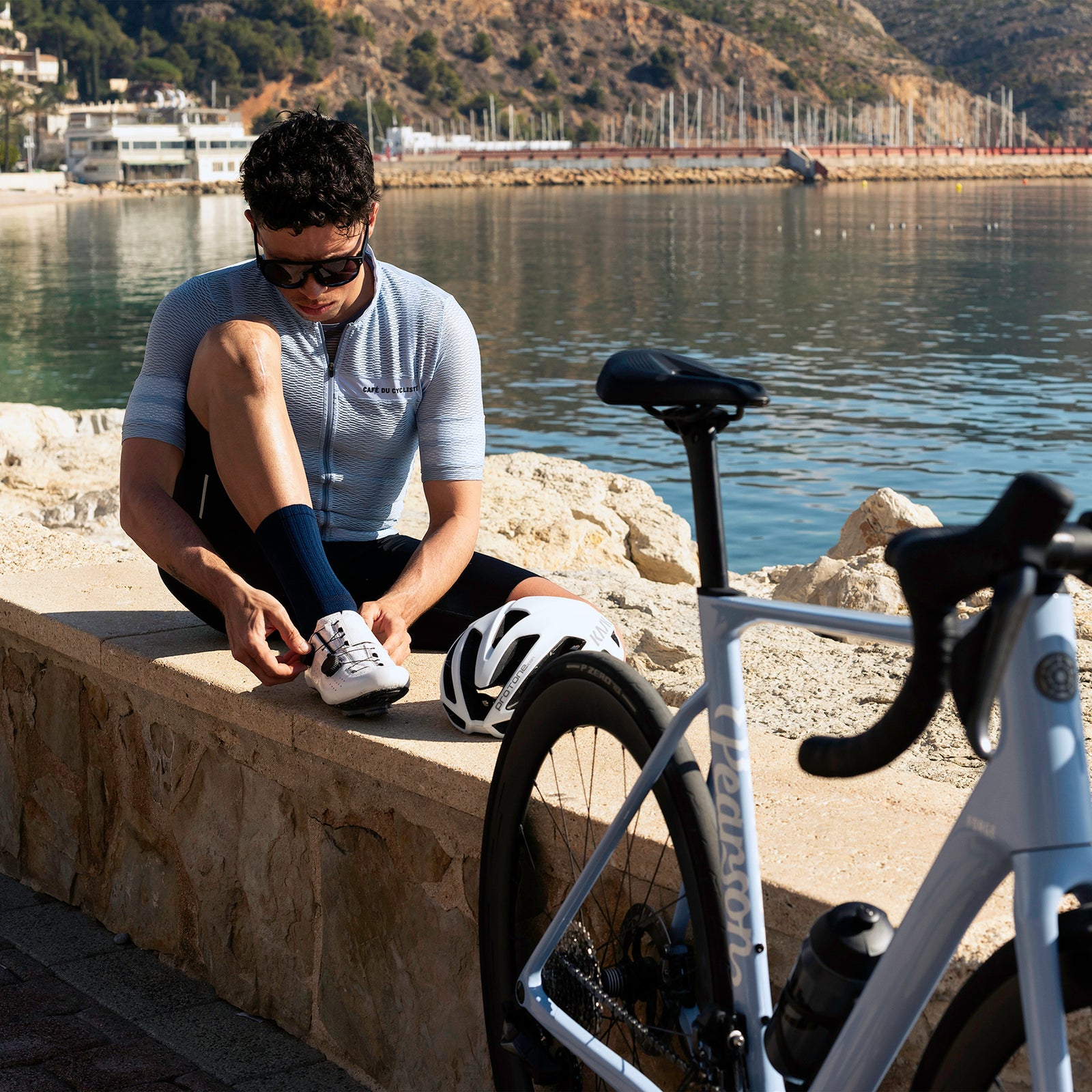Designing cycling shoes to perform

Why Lake makes the most comfortable cycling shoes in the world
We often talk about pattern work and the materials of our products, and those two elements are a major part of the core/foundation of our shoe ranges. It is also said that the design of Lake cycling shoes is not always as aesthetically pleasing as some other options in the marketplace. Here, we dig a little deeper, in an important aspect of why our cycling shoes look the way that they do. We basically want to help you to understand a little about how much research and technicity that we put into creating the world’s most comfortable, high performance cycling shoes. This is just one of the driving forces behind what makes a Lake shoe a Lake shoe – and why we always stand out from the crowd, for the right reasons.
Intentional movement vs unintentional movement
Allowing your foot to change shape, flex and expand are paramount for foot health and comfort
Footwear that works as a 2nd skin per se, allows the foot to maintain stabilization without constriction. Stiffness is often misinterpreted as stability, but in terms of cycling shoes, the shoe sole functions as the ground and it is the sole in the strictest sense that we want to imbue stiffness, to be at the sole of the shoe. Not stiffness at the same level of concrete, but more of that of the natural earth. Stiffness that creeps too far into the upper of the shoe starts putting the comfort of your foot into question – and we’re pretty sure here at Lake that you might have encountered this in your own cycle shoe journey. Stiff, nonflexible materials that go over the tendons, veins and tissue across the top of the foot are often culprits for discomfort or pain; not simply in cycle shoes, but also in general shoe wear.
Stabilization of your foot inside a shoe, without constriction is really important to us at Lake. It’s achieved by us researching and using materials that have properties of stretch and form taking, and which are designed in a pattern with the maximum amount of adjustability, as well as form following, all the while being built around a neutral shape that is formed to emulate your foot shape. It sounds complex I know. However, in basic terms, we want to mirror your foot and allow it to move, but in a way that is comfortable and performance orientated – the cycling shoe goal.
Stability increases comfort and performance
Pattern work that allows the upper material to follow the last shape without it being in excessive tension ensures that the upper will stabilize your foot, while also allowing for blood circulation for temperature regulation. It also allows your foot to flex/change shape from muscle movement during that hard physical activity. This stabilization plays an important role in keeping the foot from sliding or rubbing inside the shoe unintentionally. When this movement occurs, the shoe is most often not the correct size, shape or does not have proper amount of adjustability to stabilize the foot. We try to ensure that a cycling shoe fits you in lots of ways: length, width, volume, and shape of your foot. By looking at so many variables, we can ensure that you ride comfortably all day long.

Intentional movement of the foot
Managing intentional movement has multiple factors that are carefully considered when a shoe is designed, and unfortunately, this is often to the sacrifice of the shoe aesthetics. We don’t aim to be the most stylish cycling shoe in the world – we want to be the most comfortable, high-performance shoe. Ultimately, wearing high-heel shoes can be high fashion; however, the cat-walk models pay for it with significant foot pain and deformations.
Mitigating unintentional movement can be a bit trickier and sometime misconstrued. Using material or manufacturing techniques that have a sole purpose based more around cost saving, or solely for aesthetic pleasure can constrict the foot to the point of pain, and never achieve true stability necessary, allowing the foot to move around in a stiff upper that have very little form-fitting. The idea of making stiffness the index of performance or what warrants high merits, really misses the point. Comfort on the bike should not be overlooked for the sake of being over stabilization – it's always a balance. Too stiff or so light that there is no structure for support. It’s not easy to get the design right; which is why here at Lake, we spend so much time in research, and why we produce so many different shoe models on so many different shoe lasts.

Innovation in design is a continual process
In 2004 we developed the CX400 road cycling shoe. It was the first of its kind, where we integrated a heel counter into the shoe sole. This idea and concept was not necessarily new in the world of shoes per se, but it was quite new in cycling. At that time, the integrated heel to sole was quite common in speed skates for instance; but the big difference was that the stiffness of the sole in speed skates continued into the upper of the shoe. For speed skates, this is necessary; and for the push from side to side, the upper must be stabilized with the shoe sole. However, in cycling this was not a requirement, and it also caused unnecessary discomfort for the cyclist.
Yes, you can make an extremely stiff and light shoe, but to what extent do you go to sacrifice long term comfort. The integrated heel to sole was all that was needed for us to achieve the aspect of stability and stiffness; to be able to create a cycling shoe that moved cycling forward – literally. For the upper however, it was crucial that the suppleness and adjustability were maintained. This divergent innovation by us is what has made Lake shoes the most comfortable cycling shoes on the market; and, 20 years later, yes; you can find a few brands that have learned this point and design aspect that we pioneered, Fortunately, what we developed 20 years ago, and what caused many others to start to take notice of, can still be found in the latest CX403 road cycling shoe model.

Looking good, feeling great – and maximising performance
Designing cycling shoes isn't a process purely based around aesthetics; although, for some other brands it seems that aesthetics often takes priority over form and function. The key for us here at Lake is to get comfort, style and performance working together in perfect harmony. As I mentioned at the beginning of this blog, the design of Lake shoes is often seen by some cyclists as not being as aesthetically pleasing as other options in the marketplace.
We’re proud of the fact though, that we continue to innovate and lead the way in cycling shoe design and performance; producing shoes like our latest CX/MX333 - which we believe is the perfect example of the evolution of cycling shoe design. It’s probably the best cycling shoe in the world, and we’re proud to be different. After all, each and every cyclist out there is an individual, and Lake produce the widest selection of the world’s best cycling shoes, just for you.
Next time that you’re thinking about changing your cycling footwear, have a closer look at Lake. From the riders in the pro peloton, to bike packers who travel the world, and club cyclists everywhere, we can give you a guarantee of comfort, allowing you to ride those long miles filled with smiles. Ultimately, isn’t that what cycling should be all about!




Leave a comment